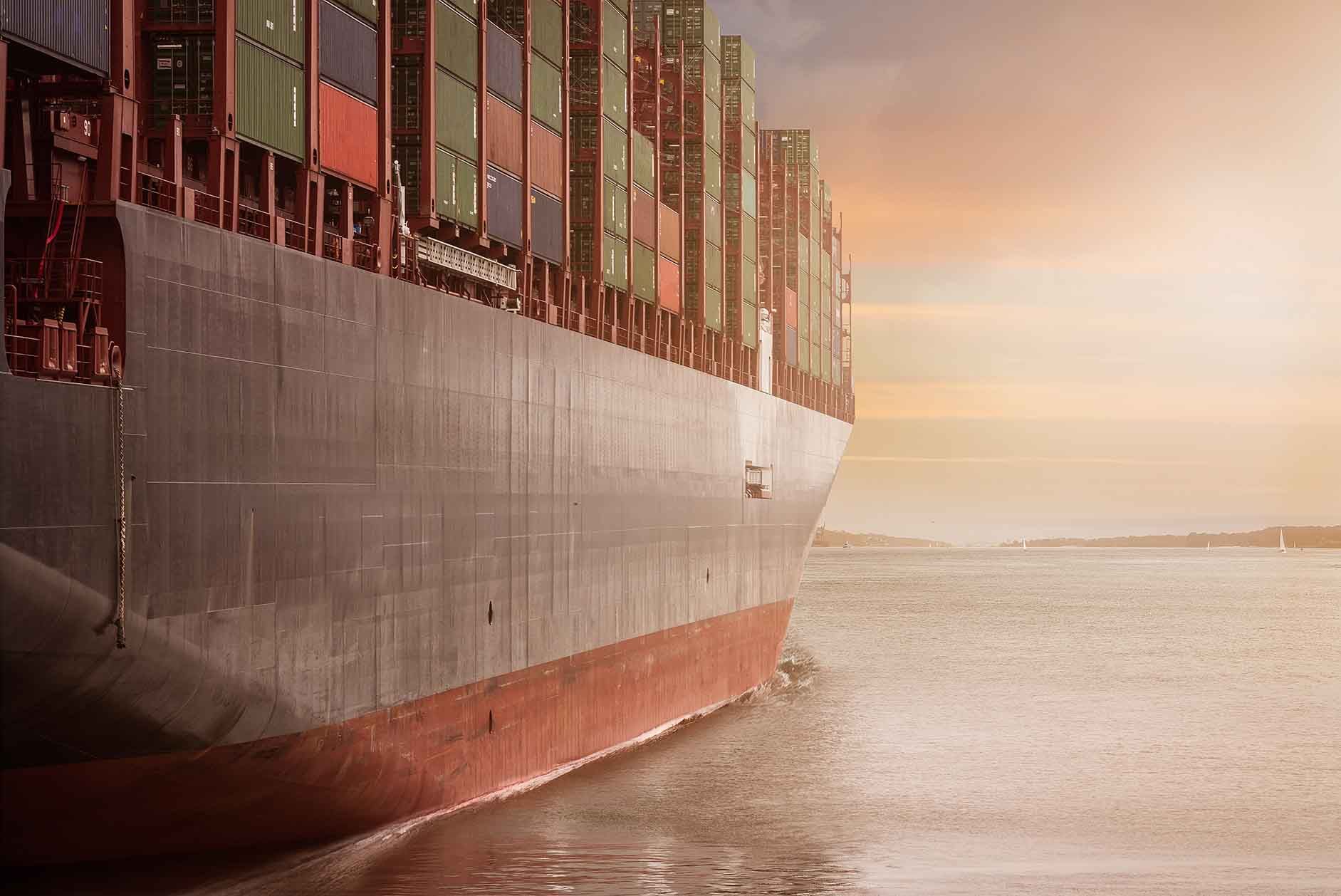BLOG
Telecom26 blog
Cargo ships, smart containers and the need for fast and reliable maritime connectivity

Back in February our maritime connectivity experts were also interested to read about a fire on-board a cargo ship south of the Azores which was carrying more than 4,000 cars and goods valued at $438m. Apparently “the fire continued to burn for several days, fuelled by lithium-ion batteries in electric vehicles on board.”.
In both these cases the use of CCTV to monitor the situation on-board remotely would have helped with the rescue efforts. Whilst GPS would, of course, have enabled the locations as the ships drifted to be shared in real-time. And, of course, fast and reliable maritime connectivity is essential to both these - and the operations across an entire cargo ship including smart containers - and this is where Telecom26 steps in.
Maritime Connectivity and Smart Containers
Apparently, the Red Sea fire started inside a container. We don’t know if it was a Smart Container but, if it was, then the crew, shipping company and the owner of the goods inside would have received immediate alerts which would have enabled early action to be taken.
The evolution of Smart Containers is something that our maritime connectivity team is also involved with as the shipping ecosystem - led by early adopter vendors and shipping companies - has been discussing the pros and cons of global industry-wide rollouts of Smart Containers with standardised technologies for a few years now.
According to this report “Smart Container Market – Global Analysis and Forecast to 2027″ published by The Insight Partners, the global smart container market was valued at US$ 2.14 Bn in 2018 and is expected to reach US$ 11.29 Bn by 2027.
The report says that the role of smart containers is to manage the entire shipment and delivery process of goods through connectivity, cloud computing traceability, monitoring, and smart sensors” and that “demand seems to be strongest from Smart Reefer Vendors”.
The report wisely segments the market into the essential components of Smart Containers:
- Hardware which includes various sensors and antennas, IoT devices, modems, and routers deployed in smart containers.
- Software covers various smart container software solutions including remote container management.
- Services cover managed and professional services.
You can read more about Smart Containers in these earlier blogs written by our maritime connectivity team:
Innovation in the container shipping industry: wind power and maritime connectivity
Telecom26, maritime connectivity, nearshore connectivity and private networks at sea
As a global maritime connectivity operator, Telecom26 has a complete range of maritime connectivity solutions for vessels, crews, devices, smart containers and whomever and whatever needs to be connected whilst at sea – or in port.
We provide the maritime connectivity which is required for the digital ship, IoT connectivity, crew welfare, passengers and much more.
We offer bespoke maritime and marine communications services that integrate inbound and outbound roaming, with full support of data services. Fortunately, the maritime connectivity services provided by Telecom26 that enable crews to communicate with their loved ones, watch Netflix, do their banking online etc use the same infrastructure necessary to support the digital transformation of operations on-board including IoT.
Our maritime connectivity services include:
- A full Cellular At Sea service for vessels of all sizes
- A Nearshore Connectivity Service - Our recent blog “Nearshore Connectivity - perfect for vessels up to 30km off the coast” discusses how most ships and vessels spend the majority (up to 60%) of their time in port or in coastal waters. They are therefore within range of land-based cellular networks which can provide coverage to vessels as far out as 30km. So, instead of relying on costly satellite for data or connectivity, vessels – and the people on-board - can use these cellular networks.
- Networks for personal communications, onboard
- A Maritime IoT Service including private networks on-board vessels, oil rigs and platforms – and supply chain tracking
At the heart of our maritime connectivity services are our Global eSIM and physical SIM cards. These provide data to all onboard devices via cellular data links. By onboard devices we mean Wi-Fi routers, container sensors, IoT networks, any system process that needs to connect to the internet, to a remote server or monitor – as well as the phones and devices of the crew.
Our Global eSIM and physical SIMs can access most terrestrial and maritime networks. Not all networks are equally available – some offer better coverage in some locations than others. And, every country has its own range of terrestrial network operators. This means that, as a vessel moves along the coast, different networks may be available.
For vessel owners who care about the welfare of their crew and understand that being able to communicate with the outside world during a voyage improves the quality of life of their team, there are a few different options to provide connectivity to their crews:
- Supply Telecom26 Global eSIM cards for sailors to insert in their personal devices. The fleet owner could pick up the cost of these or charge a fixed rate. Either way it would work out cheaper for the sailors than roaming on random networks as they travel.
- Use Telecom26 routers to create a private on-board LAN/Wi-Fi network which the crew can access.
Finally, our Global eSIM cards enable sailors to communicate with family and friends when they are on-shore. As one sailor commented that “sometimes when we reach port you find that SIM cards are expensive.”
Catching up with our maritime connectivity team
We will shortly be announcing our new partnership with Sateliot, the first company to build a satellite network dedicated to providing 5G connectivity to IoT devices. This news will be of great interest to our maritime connectivity customers.
In addition, the expansion of Telecom26’s 5G capabilities will help improve the connectivity of the people and devices on-board vessels of all sizes.
If you’d like to arrange to a call to discuss how our maritime connectivity and maritime cellular communications services can connect the people and devices on-board your vessels as they travel around the world then please get in touch.
Catching-up in-person to discuss your maritime connectivity needs
Later in the year Telecom26 will be attending these other international trade fairs where we will be discussing our global and maritime connectivity services.
Mets Trade
15- 17 November
Amsterdam
MEDICA 2022
14–17 November 2022
Düsseldorf, Germany
If you, or one of your team, will be at any of these shows and would like to discuss our maritime connectivity and maritime cellular communications services in-person then please book a meeting.
If you’re not attending any of the shows, then please get in touch to discuss our maritime connectivity services by phone or video call.



